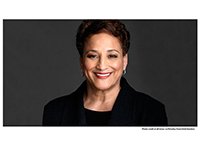This Dementia Discovery Fund is bringing together the best minds to work on dementia. Stroke leaders tried to do that and they came up with the inadequate Helsingborg declarations.
Helsingborg 1996
Helsingborg 2006
The WSO had their World Stroke Organization Synergium in 2010 and you can see why in my opinion it is totally worthless.
AARP Invests $60 Million to Fund Research for Cures to Dementia and Alzheimer's
Dr. Ethel Percy Andrus
AARP’s Brain Health Fund is investing $60 million in the Dementia Discovery Fund (DDF), which invests in research and development of breakthrough treatments for dementia. This move reflects AARP’s ongoing commitment to helping people with dementia and family caregivers, and makes AARP the single largest investor in the DDF.
More than 6 million people in the United States suffer from various types of dementia, including Alzheimer’s disease, and those numbers are growing at an alarming rate. Based on current projections, by 2050 that number will exceed 16 million, or about 1 in 5 Americans age 65 and older.
Dementia also takes a devastating emotional, financial and physical toll on the families of those who are diagnosed with these ailments. In 2016, nearly 16 million family members and friends provided more than 18 billion hours of unpaid caregiving assistance to those with Alzheimer’s and other types of dementia.
Aware of the broad impact of these illnesses, researchers have worked hard to find effective treatments. But dementia is a complicated illness. Hundreds of clinical trials have failed, and some advances once thought to be promising have turned into dead ends. Several drug companies have stopped conducting research. A new approach is needed.
By bringing together the world’s best minds to accelerate global research efforts, the DDF will help to kick-start a different approach to dementia research by applying the venture capital model, common in Silicon Valley, to fund research toward new therapies. Founded in 2015, the fund already has invested in 16 organizations exploring new pathways for treating dementia.
AARP has long been committed to raising awareness of dementia-related illnesses and educating people age 50 and older — and their caregivers — on how to maintain brain health while supporting those who suffer from dementia. This investment in the DDF also provides hope for the future by recognizing that the urgent need to find better treatments will require cooperation among researchers, public health agencies and investors.
For six decades, AARP has focused on finding solutions that improve the lives of older Americans, and we will continue to do so as the challenges that each generation faces change. Only 12 years from now, the first millennials will be turning 49, Gen Xers will begin turning 65 and the first boomers will be turning 84 — an age at which dementia is most prevalent. By making this investment, our hope is that, by then, we can add finding a treatment and ultimately a cure for dementia to the list of battles we have won.

No comments:
Post a Comment